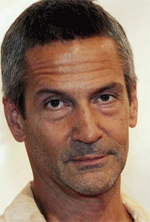Billy Squier’s WoodyTone
 In case you need a reminder, dust off your Don’t Say No album or CD, or click here to go to last.fm and give those tunes a listen. THAT, my friends, is WoodyTone.
In case you need a reminder, dust off your Don’t Say No album or CD, or click here to go to last.fm and give those tunes a listen. THAT, my friends, is WoodyTone.
Dang. You can clearly hear the vintage gear and analog recording equipment, even on laptop speakers. (This is making me wonder whether digital gear is able to record sweet WoodyTones.)
I heard one of my favorite Squier tunes (naturally a heavier one) on Internet radio the other day, the Stroke, and had to go gear-exploring. What did Squier use at the time? Surely he couldn’t get this tone just by luck — could he?
I dug up a few-years-old interview with Billy at vintage-guitar.com where he sho-nuff talks about his collection of, and love for, vintage gear. Here’s what he used on Don’t Say No:
- A 1960 Fender Tele Custom on “In The Dark,” “My Kinda Lover,” “You Know What I Like,” “Too Daze Gone,” and “Lonely Is The Night.” On “The Stroke” he played a ’57 Strat, and on “Whadda You Want From Me” a ’56 Gibson Les Paul Special.
- The amp was a Marshall “Lead 100,” with a “single cabinet with a combination of Altec and Celestion speakers.”
Other interesting tidbits from the article:
I split up my cabinets with Celestions and Altecs, which gave me a bit more punch and definition without sacrificing the warm distortion characteristics of the Celestions. When I ran out of Altecs, I switched to EVs.
I did follow Clapton’s route through the SG and from there into the double-cutaway Les Paul Special, of which I had two. After Derek & The Dominos, was released, I tracked down a ’57 Strat without a tremolo. It was then that I came up with what I believe to be the original expanded wiring design for this guitar. What happened was, I didn’t like having to jockey the toggle switch into those in-between positions for the out-of-phase funky sounds that Clapton was using, so I went to a couple of hot-shot guitar techs to see if they could help. The catch was I didn’t want to alter any of the original knobs or introduce anything new that would disturb the integrity of the instrument. When they couldn’t sort me out, I came up with the idea of converting the second tone control into a volume control for the neck pickup. I then wired the middle and lead pickups to the toggle switch in a normal two-pickup configuration. This enabled me to play any combination of pickups – seven in all – with no alterations to the body or pickguard. The Strats I have today are wired this way.
After reading this, I’m ready for some “new” vintage gear-driven Billy Squier. Where’s Bill Aucoin when you need him?
Here’s Billy’s current website — unfortunately devoid of any pics of that luscious gear: www.billysquier.com
Category: Billy Squier, Marshall, Speakers














I was fortunate enough to see Billy Squire open for Pat Benetar at the Pier in NYC back in 1982. Squier's set was awesome, and his vintage tone was very much in evidence: very few (if any) effects, just a LP Standard into a Marshall stack.
Then Benetar hit the stage with Neil Geraldo on guitar. In stark contrast to Squire, Geraldo's rig was very complex, running through a truck-load of rack-mounted effects. Geraldo got some cool tonal effects with his rig, but the overall sound was slick, over-produced, and unnatural (definitely not "woody").
The contrast between Squire's tone and Geraldo's tone was like night-and-day. Needless to say, I left that concert with a new appreciation of the beautiful simplicity of a great guitar running directly into great amp. It was a huge lesson for a young guitar player on the perils of "too much" signal processing as opposed to the stripped-down approach of Squire.